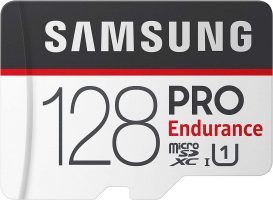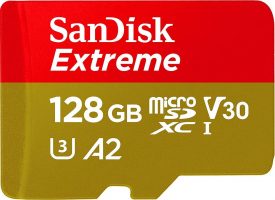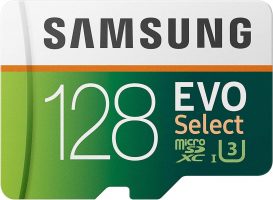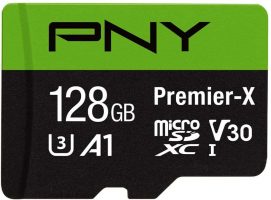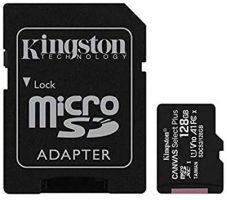Best Raspberry Pi SD Card in 2021
Get the most out of your Raspberry Pi with the best SD Cards
- Last Updated Jun 21, 2021
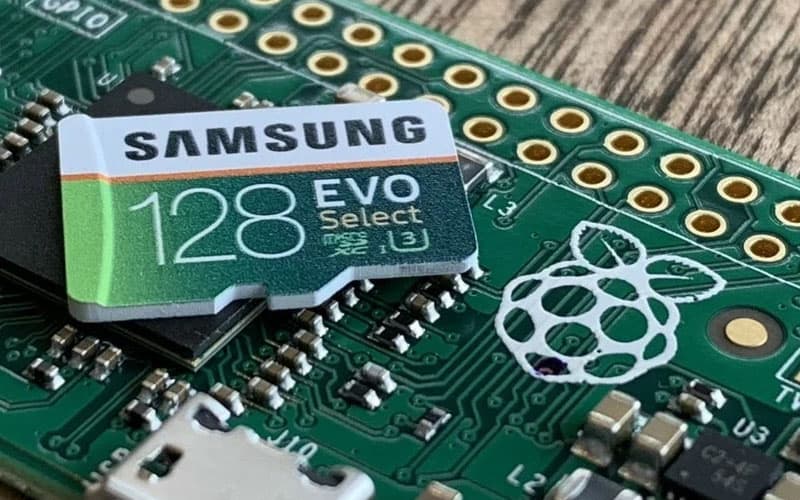
Lauded for their small size, affordability, and ever-growing capacity, SD Cards are an integral part of any Raspberry Pi setup. Indeed, the Raspberry Pi, whatever model, has no built-in hard drive, SSD, or internal storage of any kind, instead of delegating boot and storage duties to an SD Card in the majority of projects. Lacking an SD Card, a Raspberry Pi becomes no more than a worthless slab of electronic waste.
With the Raspberry Pi leaning so heavily on these stamp-sized storage solutions, SD cards take quite a beating, with users subjecting them to a procession of reads and writes that chip away at and reduce their lifespan, which is already short compared to other typical forms of storage such as SSDs and HDDs. Not all SD Cards are created equal, and some simply aren’t equipped to handle the demands of the Raspberry Pi. Many beginners make the mistake of opting for the cheapest SD Card possible, only to encounter a drastic slow down in read/write speeds, corrupted data issues, and, worse, failures within a time frame sometimes as short as a few months.
With this in mind, which is the best SD Card for the Raspberry Pi? In today’s guide, we’ll endeavor to answer that very question by highlighting a selection of the best Raspberry Pi SD Cards.
Products at a Glance
How We Picked
The world of SD Cards is a morass of jargon, inflated marketing claims, and ever-ballooning capacities, which makes choosing the right SD Card harder than you’d expect. We’ve, therefore, braved a tedious dive into the SD Card market, so you don’t have to.
To find the best options out there, we panned for SD Cards that offer excellent speeds and yield good real-world RPi performance but also boast an affordable price, long life span, and rugged construction to weather anything even the most demanding Raspberry Pi projects can muster up.
In keeping with our aim of showcasing the top options, we’ve slimmed down our winners to five recommendations from various manufacturers. Read on for a quick review of each, and, further down, a ‘Things to Consider’ section where we try our hand at demystifying the oft-confusing specifications of SD Cards.
Best Raspberry Pi SD Card in 2021
128 GB capacity
100 MB/s read, 30 MB/s write
Solid construction and damage proofing
Long lifespan and 5 year limited warranty
Reasonably priced
On paper, the Samsung PRO Endurance isn’t the fastest SD Card out there, nursing a fairly typical U1 UHS Speed Class and advertised speeds of 100 MB/s write and 30 MB/s. However, lurking behind these middling specifications is one of the most well-rounded SD Cards for the Raspberry Pi, not least due to a roomy 128 GB capacity.
The card is mainly designed for professional-level video recording and can handle a massive volume of read/write cycles. This translates well to the Raspberry, with the Card confidently strutting its stuff with nippy boot and application load times.
It’s not just the huge GB count and top Raspberry Pi performance you’re paying for here, though. The Samsung PRO Endurance has longevity baked in. Samsung says the PRO Endurance lasts up to 25 times longer than the average SD Card.
While some marketing pomp is wrapped up in that statement, the Samsung PRO Endurance has one of the best lifespans we’ve come across. So confident is the South Korean company in their claim that the SD Card comes with a 5-year warranty. As far as putting your money where your mouth is, Samsung’s going the whole nine yards here.
The Samsung PRO Endurance is ready for any occasion and setting, including braving the elements in outdoor Pi projects, thanks to being waterproof (IPX7), magnet-proof, and X-ray-proof, as well as being quite a home in temperatures anywhere from – 25-degrees to 85-degrees.
There’s very little to criticize here besides the usual formatting song and dance required before the SD Card is Raspberry Pi-ready. Samsung’s done well to deliver the complete package, and at an affordable price point, to boot.
128 GB capacity
160 MB/s read, 90 MB/s write
C10, U3, V30, A2
Durable
Expect to pay more for the faster performance
With the SanDisk 128GB Extreme, SanDisk’s gone all in and busted out an enviable list of Speed Classes (C10, U3, V30, A2), which, apart from inducing some perplexed head-scratching when eyeing the listing, indicates some enviable real-world read and write performance when inserted in a Raspberry Pi.
According to SanDisk, the Extreme pushes maximum read speeds up to 160 MB/s, while write speeds sit at a swift 90 MB/s. These match the Speed Class of the SD Card: A2 (4000 read IOPS, 2000 write IOPS), U3 (above 30 MB/s write speeds), V30 (above 30 MB/s write speeds), and C10 (once again, topping 30 MB/s). As we cover at the end of our reviews, these Class ratings aren’t always a marker of excellent Raspberry Pi performance, but in the case of the SanDisk 128GB Extreme, they align with real-world performance with top boot speeds, fast transfers, and the card is no slouch when it comes to application loading either.
The SanDisk 128GB Extreme is also a durable option with shock-proof, water-proof, temperature-proof, and X-ray-proof credentials that should see it working for the years ahead backed by a limited lifetime warranty.
High speeds do come with a price surge, though. It’s a slight jump in the grand scheme of a Raspberry Pi project budget, but still, a noticeable increase compared to other similar capacity SD Cards.
128 GB capacity
U3 100 MB/s read, 90 MB/s write
Four-Proof protection
Built to last, the Samsung EVO Select can handle all manner of harsh and extreme conditions and still reliably power up a Raspberry Pi. For projects exposed to the elements, this is the SD Card to go for.
The Samsung EVO Select is backed by what Samsung calls ‘4-Proof Protection.’ It’s entirely waterproof, capable of withstanding a sustained seawater dunk for up to 72 hours, and still work swimmingly with IEC 60529 and IPX7 certification. Additionally, the SD Card will remain operational at temperatures as low as an icy – 25-degrees, all the way to a scorching 85-degrees. It’s equally well equipped to handle X-rays up to 50 Roentgen and is magnet-proof up to 15,000 gauss, or roughly what’s emitted by an MRI scanner. Furthermore, it’s also shock-proof if dropped at heights up to 2 meters.
While most won’t subject their Pi nor the SD Card to such a beating, it’s reassuring to know your data is secure, packaged in a rugged and durable shell, and backed by a 10-year limited warranty. The Samsung EVO Select doesn’t just impress in this respect, though. It has a roomy 128 GB capacity, C10/U3 speed rating with theoretical max speeds up to 100 MB/s read and 90 MB/s write. In real-world situations, Samsung EVO Select makes easy work of storage-reliant tasks, breezing through boot-ups and application loading.
A very stomachable $30 price tag also helps elevate the Samsung EVO Select to one of the best SD Cards for Raspberry Pi.
128 GB capacity
C10 U3 V30 A1 Speed Class
100 MB/s read
Under $20
Better write speeds found elsewhere
Compared to a few years ago, SD Cards are now relatively inexpensive, especially if you dip into the small capacity options. Still, we’re all about nabbing a bargain and saving money where possible here. To that end, we’ve included the PNY Premier-X as our top affordable SD Card for the Raspberry Pi.
Like all the cards in our list, the PNY Premier-X has a massive 128 GB capacity. We’d be impressed by anyone who can fill it up when used for most Raspberry Pi applications and projects. The large capacity also helps longevity, especially when paired with the wear leveling features found in most if not all respectable SD Cards these days, as it won’t write over the same batch of cells over and over again unless used for the most write-intensive applications.
The PNY Premier-X is no lightweight when it comes to speed either. You have all the most coveted Speed Class ratings: C10, U3, V30, and A1. PNY says it can hit theoretical maximum sequential read speeds up to 100 MB/s matching most of the other SD Cards we’re recommending in our product guide. Curiously, PNY doesn’t advertise write speeds anywhere. After some time with the card, we see why: it trails behind other pricier options in that respect, although overall Raspberry Pi performance is nothing to complain about.
The highlight is, of course, the price: under $20, if not lower if you manage to pick it up on sale. PNY has also weaved in your typical proofing, too: water-proof, shock-proof, magnet-proof, and temperature-proof. The PNY Premier-X secures an emphatic nod of approval from us for those looking for value for money.
128 GB capacity
C10 A1 U3 V30
100 MBs/ read
Lifetime warranty
Low price
Low write speeds
Now, while the PNY Premier-X is affordably priced, it’s entirely possible to drop even lower down the pricing scale and still find some excellent SD Card options. Case in point, the Kingston Canvas Select Plus. With an asking price of just north of $15, this SD Card has all the hallmarks of a genuine bargain and a 128 GB capacity, no less.
With C10, A1, U3, and V30 Speed Class ratings, the Kingston Canvas Select Plus is no slouch. The advertised write speeds ceiling at a perfectly reasonable and standard 100 MB/s. When slotted in a Raspberry Pi, the Kingston Canvas Select Plus delivered a good experience with decent boot times, application loading, and surprisingly nippy write speeds for the price.
The write speeds sit at a respectable maximum cap of 50 MB/s. Not bad by most people’s standards, but behind some of the SD Cards above that ask you to fork out a bit more cash for the pleasure of becoming an owner. In our opinion, this is a reasonable compromise for the lower cost.
Kingston’s packaged in a lifetime warranty, a good sign for the card’s longevity, and implemented water, shock, vibration, temperature, and X-Ray proofing.
Things To Consider
FAQs
Our Verdict
While most bog-standard SD Cards should work fine with the Raspberry Pi, the Samsung PRO Endurance is one of the best options to get the most out of diminutive Pi thanks to a 128 GB capacity, solid construction, long life span, and top Pi performance.
For the speed demons out there, the SanDisk 128GB Extreme’s 160 MB/s read and 90 MB/s write speeds should be more than enough for even the most storage-intensive projects. Expect to lay down more cash compared to slightly slower alternatives, though.
An SD Card paired with a Raspberry Pi needs to stand the test of time. For boasting a wealth of proofing features and overall ruggedness alongside excellent speeds, the Samsung EVO Select is the SD Card of choice for those that value longevity and durability.
The PNY Premier-X is proof there’s no need to overspend for a high-capacity SD Card. A slight drop in write speeds is a reasonable sacrifice to drop the price tag to under $20.
Finally, the Kingston Canvas Select Plus should please budget-conscious tinkerers with its low price, 128 GB capacity, strong write speeds, and lifetime warranty.
Our guide to the best Raspberry Pi SD Cards now comes to an end. Hopefully, we’ve shed some light on what SD Cards pair best with the RPi. As always, the comments section is open for any questions, suggestions, or concerns.

